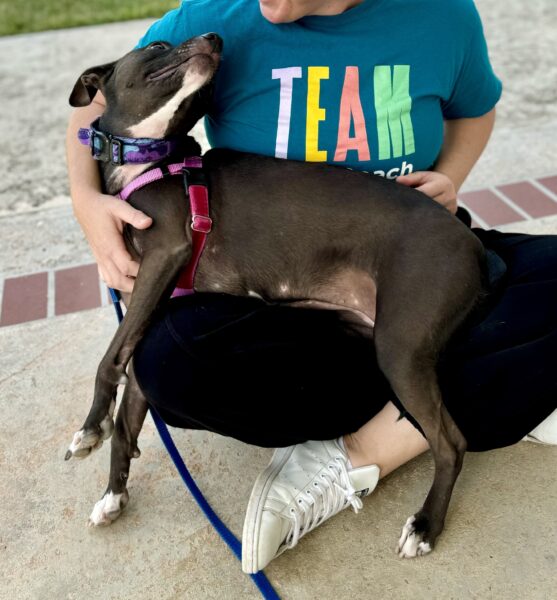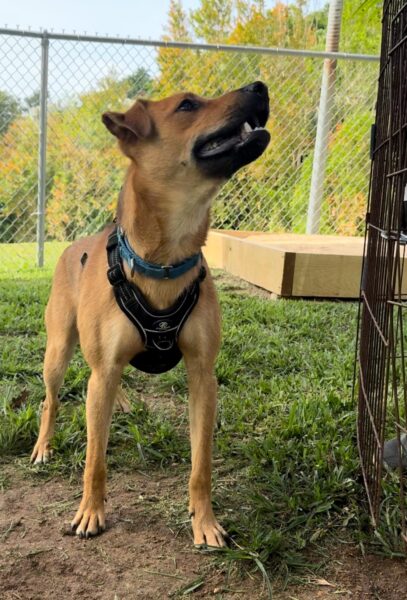The involvement of therapy animals in healthcare facilities, schools and private therapy/medical practices is becoming increasingly popular. While the animal’s temperament and training is essential, what is often overlooked is the extensive training required for the handler who is responsible for the training, management, care and protection of their partner regardless of species.
Teachers, counsellors, therapists, pet dog handlers and others incorporating their own dogs in animal assisted interventions, need a strong dog handler relationship built on trust; understanding of their dog’s body language and training / handling skills to effectively, calmly and quickly guide their dog in a variety of situations.
‘If animals are to be included in mental health treatment, it is ethically and professionally necessary for clinicians to understand species- and breed-specific animal capacities and behaviors beyond the basic understanding gained through pet ownership or pet training.’ (Fine, 2015)

This training enables handlers to:
Redirect your dog before excitement or stress appears or escalates. Every dog has their own body language sequence a series of small steps which indicates they are getting excited, frustrated or their stress level is growing. For everyone’s safety and the success of the session this is the most important knowledge every dog handler should demonstrate.
Correctly interpreting and acting on your dog’s body language can open up a range of conversations on empathy, frustration, and the importance of reciprocity in interactions to name a few. It demonstrates the handler’s empathy and willingness to respect the perspective of others in the room, the essence of any therapy session.
Recognizing stress signals in your dog is only the first step. Respecting those cues by removing or redirecting your dog or client, comes next. You will need to cultivate the ability to advocate for your dog, which may be difficult in social or therapeutic situations. The ability to tactfully extricate your dog from a situation is a core handler skill that protects the dog – handler bond and preserves your dog’s continued comfort in therapy work.
Avoid disconnection even briefly from your client. In a session, it can be detrimental to the client’s experience and their relationship with the therapist if their therapist continually disconnects to train or redirect their dog. Training should be in place prior to bringing your dog to sessions unless the sessions are specifically designed to incorporate training.
In this case, management should be in place and the dog’s role and limits should be clearly outlined to the client. If your attention must shift to the dog, a co-facilitator should maintain contact with the client. For example, I work with Dr. Laura Henagulph in the Theratails program at the Bermuda SPCA, where sessions quite often involve working with untrained dogs. We set expectations with clients at the start of the session and put management in place. If I need to direct my attention to the dog, Dr. Henagulph maintains contact with the client.

Ensure a respectful client-centered interaction. Clients may not self-advocate and may tolerate socially inappropriate behavior from a dog, like rushing at the client, jumping up or climbing in their lap without permission. They can easily be put in a position of not wanting to appear rude or insult the therapist.
It is best to have your dog on lead, in a pen or trained to hold position on a bed until they are released. This models social empathy and etiquette to the client and validates the importance of their comfort.
For socially forward clients, these boundaries also protect your dog from being overwhelmed and can help the client notice how their energy can impact social interactions. In all cases, greetings should be consent based and controlled with both the dog and client respecting personal space.
Model respect, boundaries and patience. Depending on your training style and relationship with your dog you may allow overly forward behavior or correct them verbally in a tone that may not be conducive to your session.
Clients can easily be startled by a barking dog or sharp tones or assertive body language from their therapist even if it is directed at the dog. Instead, demonstrate calm, cooperative handling of your dog. When clients see you regulate the dog without force, they relax, trust grows and therapeutic options widen.
Sharing your pet with others is a generous act. Understanding and respecting your co-therapist’s language and needs will ensure the best experience for all involved.
* Fine, A. H. (Ed.). (2015). Handbook on animal-assisted therapy: Foundations and guidelines for animal-assisted interventions (4th ed.). Elsevier Academic Press.

